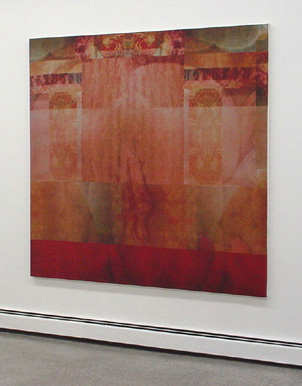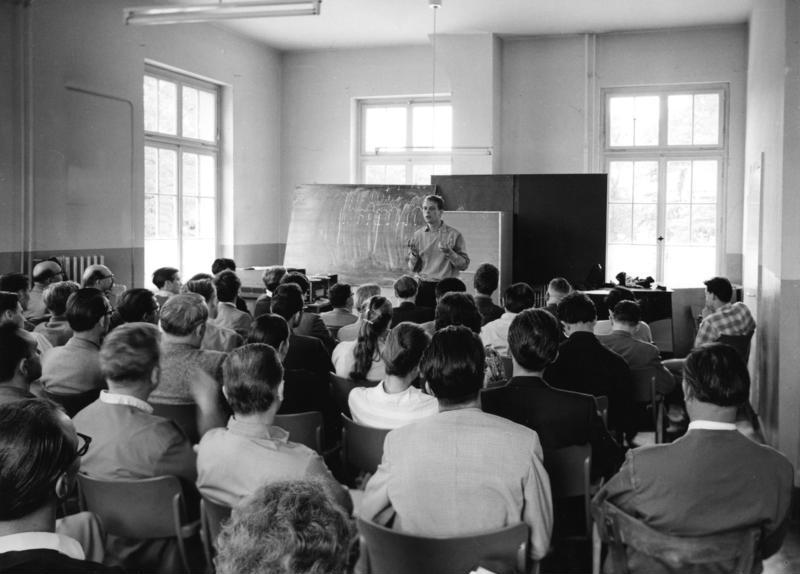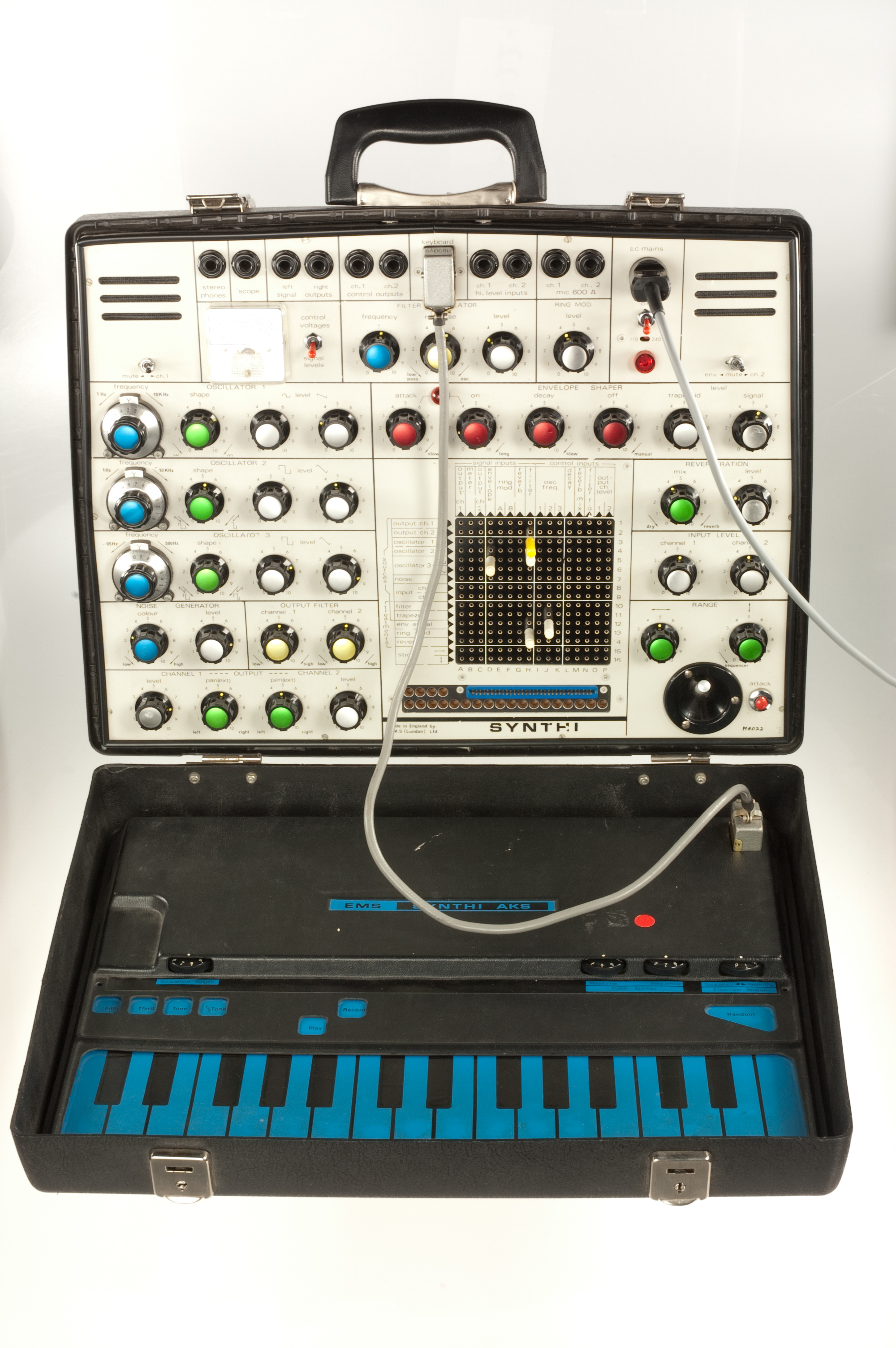|
Generative Music
Generative music is a term popularized by Brian Eno to describe music that is ever-different and changing, and that is created by a system. Historical background In 1995 whilst working with SSEYO's Koan software (built by Tim Cole and Pete Cole who later evolved it to Noatikl then Wotja), Brian Eno used the term "generative music" to describe any music that is ever-different and changing, created by a system. The term has since gone on to be used to refer to a wide range of music, from entirely random music mixes created by multiple simultaneous CD playback, through to live rule-based computer composition. Koan was SSEYO's first real-time music generation system, developed for the Windows platform. Work on Koan was started in 1990, and the software was first released to the public in 1994. In 1995 Brian Eno started working with SSEYO's Koan Pro software, work which led to the 1996 publication of his title 'Generative Music 1 with SSEYO Koan Software'. Eno's early relationship ... [...More Info...] [...Related Items...] OR: [Wikipedia] [Google] [Baidu] |
Brian Eno
Brian Peter George St John le Baptiste de la Salle Eno (; born Brian Peter George Eno, 15 May 1948) is a British musician, composer, record producer and visual artist best known for his contributions to ambient music and work in rock, pop and electronica. A self-described "non-musician", Eno has helped introduce unconventional concepts and approaches to contemporary music. He has been described as one of popular music's most influential and innovative figures. Born in Suffolk, Eno studied painting and experimental music at the art school of Ipswich Civic College in the mid 1960s, and then at Winchester School of Art. He joined glam rock group Roxy Music as its synthesiser player in 1971, recording two albums with the group before departing in 1973. Eno then released a number of solo pop albums beginning with ''Here Come the Warm Jets'' (1974) and, also in the mid-1970s, began exploring a minimalist direction on influential recordings such as '' Discreet Music'' (1975) and ... [...More Info...] [...Related Items...] OR: [Wikipedia] [Google] [Baidu] |
Joseph Nechvatal
Joseph Nechvatal (born January 15, 1951) is an American post-conceptual digital artist and Aesthetics, art theoretician who creates computer-assisted paintings and computer animations, often using custom-created computer viruses. Life and work Joseph Nechvatal was born in Chicago. He studied fine art and philosophy at Southern Illinois University Carbondale, Cornell University and Columbia University. He earned a Doctor of Philosophy in Philosophy of Art and Technology at the Planetary Collegium at University of Wales, Newport [ZKM Center for Art and Media Karlsruhe lecture page ''Joseph Nechvatal: Immersion Into Noise'' and has taught art theory and art history at the School of Visual Arts. He has had many solo exhibitions, including one in Berlin His work in the early 1980s chiefly consisted of pos ... [...More Info...] [...Related Items...] OR: [Wikipedia] [Google] [Baidu] |
Aleatoric Music
Aleatoric music (also aleatory music or chance music; from the Latin word ''alea'', meaning "dice") is music in which some element of the composition is left to chance, and/or some primary element of a composed work's realization is left to the determination of its performer(s). The term is most often associated with procedures in which the chance element involves a relatively limited number of possibilities. The term became known to European composers through lectures by acoustician Werner Meyer-Eppler at the Darmstadt International Summer Courses for New Music in the beginning of the 1950s. According to his definition, "a process is said to be aleatoric ... if its course is determined in general but depends on chance in detail". Through a confusion of Meyer-Eppler's German terms ''Aleatorik'' (noun) and ''aleatorisch'' (adjective), his translator created a new English word, "aleatoric" (rather than using the existing English adjective "aleatory"), which quickly became fashiona ... [...More Info...] [...Related Items...] OR: [Wikipedia] [Google] [Baidu] |
Generative Art
Generative art refers to art that in whole or in part has been created with the use of an autonomous system. An autonomous system in this context is generally one that is non-human and can independently determine features of an artwork that would otherwise require decisions made directly by the artist. In some cases the human creator may claim that the Generative systems, generative system represents their own artistic idea, and in others that the system takes on the role of the creator. "Generative art" often refers to algorithmic art (algorithmically determined computer generated artwork) and synthetic media (general term for any algorithmically-generated media), but artists can also make it using systems of chemistry, biology, mechanics and robotics, smart materials, manual randomization, mathematics, data mapping, symmetry, Tessellation, tiling, and more. History The use of the word "generative" in the discussion of art has developed over time. The use of "Artificial DN ... [...More Info...] [...Related Items...] OR: [Wikipedia] [Google] [Baidu] |
Peter Zinovieff
Peter Zinovieff (26 January 1933 – 23 June 2021) was a British engineer and composer. In the late 1960s, his company, Electronic Music Studios (EMS), made the VCS3, a synthesizer used by many early progressive rock bands such as Pink Floyd and White Noise, and Krautrock groups as well as more pop-orientated artists, including Todd Rundgren and David Bowie. In later life, he worked primarily as a composer of electronic music. Early life and education Zinovieff was born on 26 January 1933; his parents, Leo Zinovieff and Sofka, née Princess Sophia Dolgorouky, were both Russian aristocrats, who met in London after their families had emigrated to escape the Russian Revolution and soon divorced. During World War II, he and his brother Ian lived with their grandparents in Guildford and then with their father in Sussex. He attended Guildford Royal Grammar School, Gordonstoun School and Oxford University, where he earned a doctorate in geology. Career in music and electronics ... [...More Info...] [...Related Items...] OR: [Wikipedia] [Google] [Baidu] |
Brian Hodgson
Brian Hodgson (born 1938) is a British television composer and sound technician. Born in Liverpool in 1938, Hodgson joined the BBC Radiophonic Workshop in 1962 where he became the original sound effects creator for the science fiction programme ''Doctor Who''. He devised the sound of the TARDIS (which he created by running the back door key to his mother's house along a bass string of a gutted piano, then electronically treating the recording) and the voices of the Daleks, which he created by distorting the actors' voices and feeding them through a ring modulator. He continued to produce effects for the programme until 1972 when he left the Workshop, leaving Dick Mills to produce effects for the remainder of the show's run. Earlier, in 1966, with fellow workshop musician Delia Derbyshire and EMS founder Peter Zinovieff, he helped set up Unit Delta Plus, an organisation which they intended to use to create and promote electronic music. Based in a studio in Zinovieff's townhouse ... [...More Info...] [...Related Items...] OR: [Wikipedia] [Google] [Baidu] |
Delia Derbyshire
Delia Ann Derbyshire (5 May 1937 – 3 July 2001) was an English musician and composer of electronic music. She carried out notable work with the BBC Radiophonic Workshop during the 1960s, including her electronic arrangement of the theme music to the British science-fiction television series '' Doctor Who''. She has been referred to as "the unsung heroine of British electronic music" with her Doctor Who theme having influenced musicians including Aphex Twin, the Chemical Brothers and Paul Hartnoll of Orbital. Biography Early life Derbyshire was born in Coventry, daughter of Emma ( Dawson) and Edward Derbyshire.Breege Brennan, Master's Thesis in Computer Music, Dublin, 2008. of Cedars Avenue, Coundon, Coventry.Christine Edge, Morse code musician: How Delia crashed the sound barrier', ''Sunday Mirror'', 12 April 1970, p. 8. Her father was a sheet-metal worker.Article by Kirsten Cubitt "Dial a tune" in The Guardian newspaper, 3 September 1970. She had one sibling, a sister ... [...More Info...] [...Related Items...] OR: [Wikipedia] [Google] [Baidu] |
Unit Delta Plus
Delia Ann Derbyshire (5 May 1937 – 3 July 2001) was an English musician and composer of electronic music. She carried out notable work with the BBC Radiophonic Workshop during the 1960s, including her electronic arrangement of the theme music to the British science-fiction television series ''Doctor Who''. She has been referred to as "the unsung heroine of British electronic music" with her Doctor Who theme having influenced musicians including Aphex Twin, the Chemical Brothers and Paul Hartnoll of Orbital. Biography Early life Derbyshire was born in Coventry, daughter of Emma ( Dawson) and Edward Derbyshire.Breege Brennan, Master's Thesis in Computer Music, Dublin, 2008. of Cedars Avenue, Coundon, Coventry.Christine Edge, Morse code musician: How Delia crashed the sound barrier', ''Sunday Mirror'', 12 April 1970, p. 8. Her father was a sheet-metal worker.Article by Kirsten Cubitt "Dial a tune" in The Guardian newspaper, 3 September 1970. She had one sibling, a sister, ... [...More Info...] [...Related Items...] OR: [Wikipedia] [Google] [Baidu] |
Phasing
A phaser is an electronic sound processor used to filter a signal, and it has a series of troughs in its frequency-attenutation graph. The position (in Hz) of the peaks and troughs are typically modulated by an internal low-frequency oscillator so that they vary over time, creating a sweeping effect. Phasers are often used to give a "synthesized" or electronic effect to natural sounds, such as human speech. The voice of C-3PO from ''Star Wars'' was created by taking the actor's voice and treating it with a phaser. Process The electronic phasing effect is created by splitting an audio signal into two paths. One path treats the signal with an all-pass filter, which preserves the amplitude of the original signal and alters the phase. The amount of change in phase depends on the frequency. When signals from the two paths are mixed, the frequencies that are out of phase will cancel each other out, creating the phaser's characteristic notches. Changing the mix ratio changes the d ... [...More Info...] [...Related Items...] OR: [Wikipedia] [Google] [Baidu] |
Schenkerian Analysis
Schenkerian analysis is a method of analyzing tonal music based on the theories of Heinrich Schenker (1868–1935). The goal is to demonstrate the organic coherence of the work by showing how it relates to an abstracted deep structure, the ''Ursatz''. This primal structure is roughly the same for any tonal work, but a Schenkerian analysis shows how, in an individual case, that structure develops into a unique work at the "foreground", the level of the score itself. A key theoretical concept is "tonal space". The intervals between the notes of the tonic triad in the background form a ''tonal space'' that is filled with passing and neighbour tones, producing new triads and new tonal spaces that are open for further elaborations until the "surface" of the work (the score) is reached. The analysis uses a specialized symbolic form of musical notation. Although Schenker himself usually presents his analyses in the generative direction, starting from the fundamental structure (''Ursatz'') t ... [...More Info...] [...Related Items...] OR: [Wikipedia] [Google] [Baidu] |
Avant-garde
The avant-garde (; In 'advance guard' or ' vanguard', literally 'fore-guard') is a person or work that is experimental, radical, or unorthodox with respect to art, culture, or society.John Picchione, The New Avant-garde in Italy: Theoretical Debate and Poetic Practices' (Toronto: University of Toronto Press, 2004), p. 64 . It is frequently characterized by aesthetic innovation and initial unacceptability.Kostelanetz, Richard, ''A Dictionary of the Avant-Gardes'', Routledge, May 13, 2013 The avant-garde pushes the boundaries of what is accepted as the norm or the '' [...More Info...] [...Related Items...] OR: [Wikipedia] [Google] [Baidu] |
Another Day On Earth
''Another Day on Earth'' is the twenty-fourth solo studio album by Brian Eno, released on 13 June 2005 in the UK and Europe through Hannibal Records, and on 14 June 2005 in the US. Overview This is the first Eno album to chiefly contain vocals in more than two decades. Speaking of the album, Eno said, "''The first one I've done like that for a very long time...25 years or so''". In addition, he explained his current thoughts on lyrics in music; "''Song-writing is now actually the most difficult challenge in music''," he confessed. Music Eno recorded and mixed most of the album on a Mac, using Logic, over a period of four years. He also engineered it himself, "''because otherwise I would have had to spend six years in a commercial studio and pay staff, and that would have become too expensive''". "Bottomliners" and "Under" were first worked on about six years previously, on a DA88, the latter songs' drumming being supplied by Willie Green. On the former, and on the balla ... [...More Info...] [...Related Items...] OR: [Wikipedia] [Google] [Baidu] |








